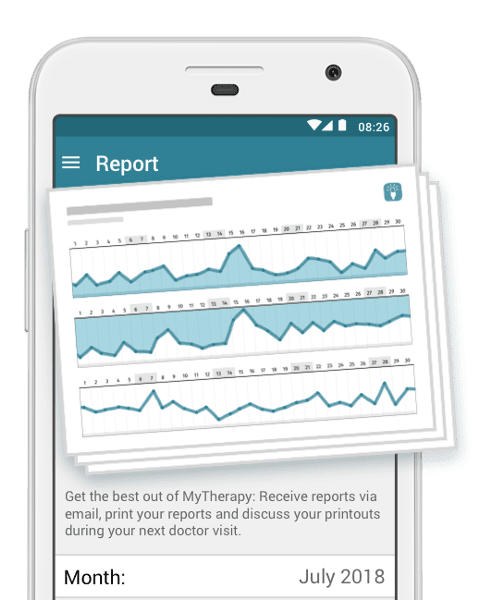Purple Day is the creation of Cassidy Megan who, at the age of 8, was struggling with the diagnosis of epilepsy she had received the previous year, in 2007. She and her family felt as though epilepsy was a taboo subject and that it was widely misunderstood by the general public. Purple Day, held on March 26 each year, was created to draw attention towards epilepsy and combat some of the myths and misconceptions about the condition that people believed to be true. In the spirit of Purple Day, Sally Gomersall and Tábata Bublitz shared their stories with us to help shed light on issues close to their hearts.
Sally Gomersall: “I Was Told I Would Die from Epilepsy”
Although the most obvious risks posed by epilepsy are related to seizures – drowning, for example – a poorly-understood phenomenon known as Sudden Unexpected Death in Epilepsy (SUDEP) accounts for 15% of all deaths from epilepsy.
Although SUDEP is uncommon, happening in around 1 in 1,000 cases of epilepsy, the risk of it increases when epilepsy is poorly controlled.
Definition of SUDEP:
“The sudden, unexpected, witnessed or unwitnessed, non-traumatic, and non-drowning death in patients with epilepsy with or without evidence for a seizure, and excluding documented status epilepticus, in which postmortem examination does not reveal a structural or toxicological cause for death.”
In Sally Gomersall’s case, the risk of SUDEP was high because she lived with refractory epilepsy, also known as drug-resistant epilepsy. Sally’s first seizure occurred when she was 18 months old and continued into her adult years as treatment after treatment failed.
“Two doctors told me I would die from my epilepsy before I was forty years old”
– Sally Gomersall
Ultimately, brain surgery became the only course of action that could bring Sally’s seizures under control. Although such a procedure entails significant risks of its own, there was a 75% chance that it would cure Sally’s epilepsy and allow her to continue her life, including raising two children, without the risk of SUDEP lingering over her head.
In 1998, 2 years after the surgery, Sally founded Epilepsy Awareness, through which she provides workshops and courses designed to enhance the skills of health and social care workers in managing people living with epilepsy. Having celebrated its 20th anniversary last year, Epilepsy Awareness is still going strong.
Sally was kind enough to share her story with us for Purple Day 2018. You can read it here:
Seizures, Spasms & Spilled Coffee: Tábata’s Life with Epilepsy
Tábata Bublitz’s seizures started when she was 14 years old. She was later diagnosed with epilepsy after two convulsive episodes that caused her to lose consciousness. Aside from the big episodes, Tábata would also experience spasms that would interfere with daily life, not least when she spilled hot coffee over herself.
Other posts you may be interested in on the MyTherapy blog:
- Back from the Brink: The Emotional Anguish of Psoriasis
- Living with an Invisible Illness: 6 People Share the Realities of Daily Life
The form of epilepsy Tábata lives with, juvenile myoclonic epilepsy, does not pose the same risk of SUDEP as refractory epilepsy does. Nonetheless, Tábata is a firm believer that a little knowledge can go a long way. Just as knowing how to perform CPR or the Heimlich maneuver can be a life-saving first aid skill, knowing how to react to a person having an epileptic seizure can help ensure their safety (and your own).
“In a convulsion case, what you need to do to help us is taking away any object or furniture that can hurt us while we are having the muscular contractions (we lose our consciousness, and the seizures are totally uncontrollable, so we will not be able to avoid hurting ourselves if no one helps),” explains Tábata.
Regarding your own safety, Tábata points out that one common mistake can prove costly.
“Many don’t know what to do when seeing a person in a convulsive episode. Due to the lack of knowledge, some think that they need to hold the person’s tongue to prevent him or her biting it during the seizure
“If you put your fingers in our mouth, you face losing them because of our involuntary muscular contractions. And they are incredibly strong!”
– Tábata Bublitz
Like Sally, Tábata was kind enough to share her story with us to help raise awareness for Purple Day. Among other topics, she discusses the mysterious “aura” with which most people living with epilepsy will be familiar.
You can read Tábata’s story here:
What is Purple Day?
Purple Day is a chance to draw attention to the difficulties people living with epilepsy face, encourage open dialogue, and help tackle the stigma with which many people living with epilepsy will be familiar.
It all started when Cassidy Megan, who in 2008 was 8 years old and had been diagnosed with epilepsy a year earlier, found herself feeling isolated by the condition. She was unable to go swimming or climbing alone, had trouble at school, and was afraid of what people might think.
The idea for Purple Day arose from her desire to tackle what she saw as a lack of publicity regarding epilepsy.
On March 26, 2008, Cassidy was able to more-or-less turn her school, in Halifax, Canada, completely purple for the day. She was also able to get The Epilepsy Association of Nova Scotia to give an assembly, while her family helped spread the message across other schools.
In the eleven years that have passed, Purple Day has grown far beyond the schools of Nova Scotia; it is now a massive worldwide awareness day that is celebrated in over 100 countries. As well as educating the general public about epilepsy, Purple Day gives those living with the condition an opportunity to speak out about the difficulties they face in everyday life.
The more stories that are told, the more myths that are debunked, and the more educated people are, the closer Cassidy’s vision comes to reality.
To find out which Purple Day events are happening near you, or if you are interested in hosting an event yourself, visit the Purple Day website.
If you live with epilepsy and are interested in having your story featured on the MyTherapy blog, you can email Dan here.
Take a look at some of the other posts on the MyTherapy blog:



